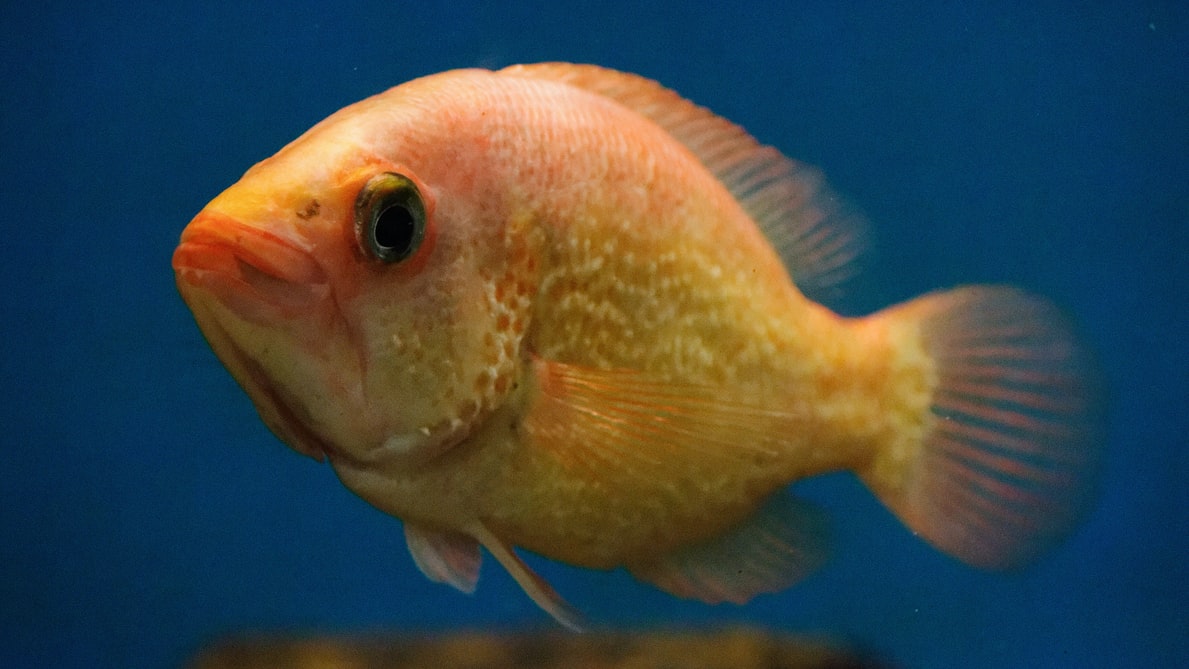Cichlids make a fine addition to any aquarium. Their colourful skins and scales have long made them a popular choice with aquarists, although feeding them the right diet is crucial if you want these fish to achieve their full potential. If you want your cichlids to maintain their colourful appearance and remain active throughout their lives, the food you are giving them needs to be seriously considered.
Natural Cichlid Diets
There are three main types of cichlid varieties in the wild, with each variety requiring a fairly specific diet. Carnivorous cichlids require a diet that is almost solely made of proteins from live bait sources. A healthy diet for a carnivorous cichlid is made up of things like crustaceans, insects and smaller feeder fish. Because they need to break down higher levels of protein and fat, the digestive tracts of carnivorous cichlids tends to be fairly short.
If you’re looking to introduce herbivorous cichlids to your aquarium, you have more options available when it comes to putting together a nutritional diet. Herbivorous cichlids will thrive on almost any plant-based food, with algae, aquatic plants and biofilm all serving as healthy food sources. Most herbivorous cichlids adopt a grazing approach to feeding, meaning they consume food throughout the day. Unlike carnivorous species, they have a much longer intestinal tract that effectively absorbs as much nutritional value from their dietary intake as possible.
Finally, there are omnivorous cichlid species. These fish consume both plant and animal matter as part of a healthy diet. If you’re looking for a low-maintenance cichlid to add to your aquarium, go for an omnivorous species. This way, you can utilise a full range of food sources to keep your cichlids healthy. The majority of cichlids fall into the omnivorous category.
Choosing Suitable Food Sources for Cichlids
Putting together a healthy diet for your cichlids is easy. All you really need to is match up the food sources to the dietary needs of your cichlids. For carnivorous cichlids, insects are an inexpensive and nutrient-rich food source. Live bait like fly larvae is a particularly good food source option, especially if you want to encourage more natural feeding behaviour. These insects are also very easy to digest as they lack hard organic matter.
What’s more, this type of food will result in less waste matter being produced by your fish once they have digested their meal. If you need to bolster the diets of your carnivorous cichlids with more protein, think about turning to ground insect matter. If your carnivorous cichlids require a diet that is particularly high protein and natural fats, make sure you accommodate this with things like shrimp meal.
Herbivorous cichlid species thrive on matter like algae, so aim to make this their main food source. Green algae is loaded with all the minerals and vitamins they’ll need in order to thrive, while also offering sufficient protein. Balancing the diets of omnivorous cichlids takes a little more effort, but is fairly easy to achieve. Ultimately, you just need to provide a healthy mix of natural plant and animal products. However, keep an eye on feeding behaviour and the overall health of your cichlids. If you notice your pets are becoming sluggish or showing signs of discolouration, you may need to rebalance the plant/animal ratio in their diets.

